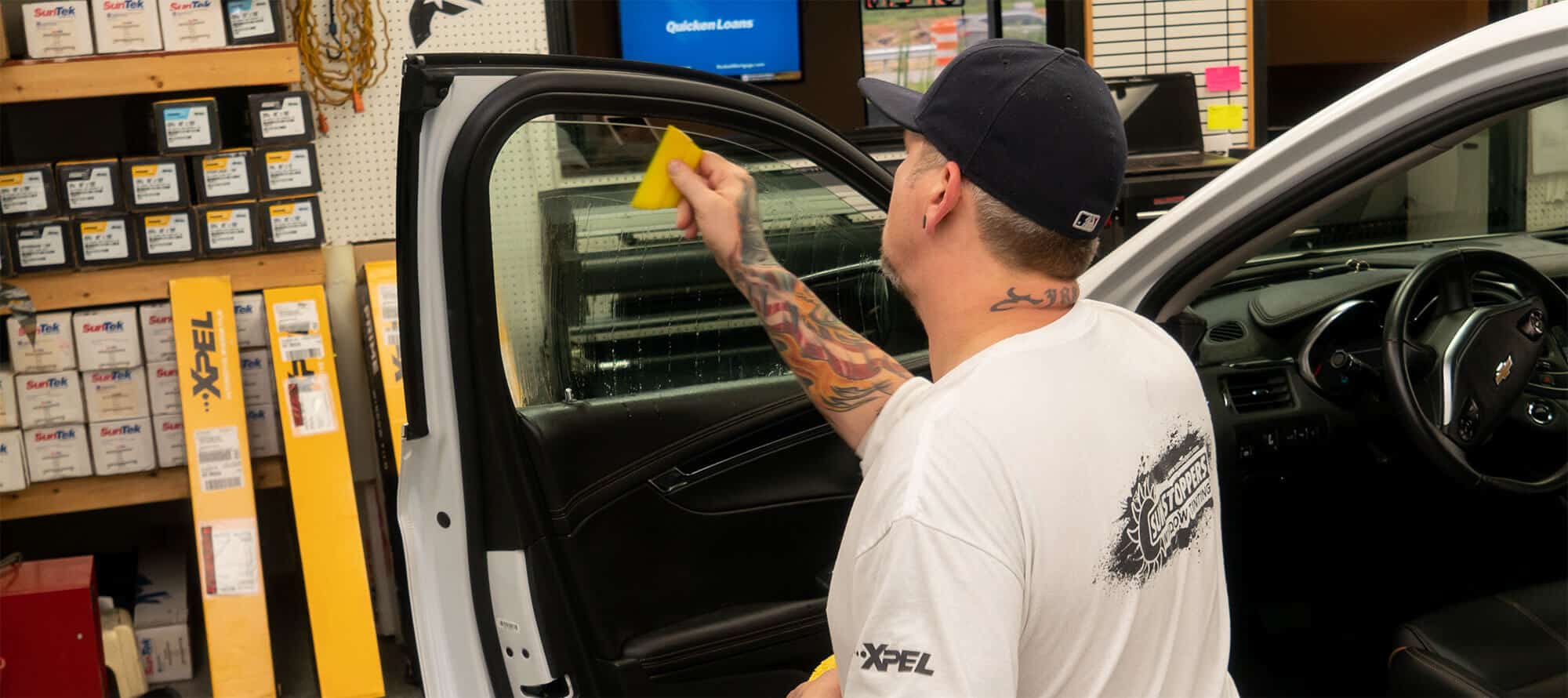- Car & Automotive
-
-
- Car & Auto
-
- Car Galleries
-
- Car Simulator
-
-
- Home & Office
-
-
- Home Services
-
- Office Services
-
- Get A Quote
-
-
- Company
-
-
- About
-
- Business
-
- Contact Us
-
-
- Reviews

Tinting your car’s windows gives you protection from dangerous UV rays, improves your driving comfort and protects your belongings.
It’s important other drivers and pedestrians are able to make eye contact and see where you’re looking. Law enforcement also needs to be able to identify the driver in a vehicle.

We can give you the darkest look possible without violating your state’s window tint laws.

Includes most 2-5 Door vehicles that seat 5 or fewer passengers.
Windshield: non-reflective tint is allowed above the manufacturer’s AS-1 line. If the AS-1 line is not visible, no tint is allowed.
Front Side Windows:
27% VLT
Back Side Windows:
27% VLT
Rear Window:
27% VLT
Minivans, SUVs, etc. that are designed to carry 10 or fewer passengers.
Windshield: non-reflective tint is allowed above the manufacturer’s AS-1 line. If the AS-1 line is not visible, no tint is allowed.
Front Side Windows:
27% VLT
Back Side Windows:
No tint limitations specified in South Carolina law
Rear Window:
No tint limitations specified in South Carolina law
Window tint with metallic particles to give glass a silver/mirror look. This reflects glare and reject heat.
Windshield:
Reflective tint is not allowed
Front Side Windows:
Reflective tint is not allowed
Back Side Windows:
Reflective tint is not allowed
Rear Window:
Reflective tint is not allowed
Other limits, restrictions, or allowances
Prohibited Tint Colors:
Red, yellow, and amber
Mirrors:
Dual side mirrors are REQUIRED if rear window is tinted
Certification:
Any vehicle equipped with an after-factory window tint must also have a certificate of compliance with a size and form approved by the Department of Public Safety.
VLT Stickers:
A certificate of compliance should be attached to the inside lower-right corner of each window that has an after-factory window tint. This sticker should contain the following information:
If you’re tired of the hot, South Carolina sun glaring in your eyes and heating up your vehicle when you leave it in a parking lot, you may want to tint your windows! Not only does window tint reduce glare and heat, but it gives you privacy, ensuring that other drivers won’t be peeking in your windows as you pass them.
Here at Sun Stoppers, we can’t wait to assist you with your window tinting needs.
Our helpful and knowledgeable staff have been expertly applying window tint and paint protection for over twenty years. We’d love to help you choose the tint that’s right for you and are happy to answer any questions you may have about window tinting in your state.
We offer tinting services throughout the state of South Carolina with our multiple store locations, including Charleston, SC, Lancaster, SC, Little River, SC, and Rock Hill, SC.
REQUEST A FREE QUOTEDISCLAIMER: Window tint laws in your state can change on a daily basis. These rules and regulations may be interpreted differently by city or county authorities. We recommend verifying this information with your local DMV or local law enforcement agencies for accuracy. This information relating to window tint laws was last updated on June 1, 2022. If you find any of this information to be inaccurate, please let us know so we can update it!